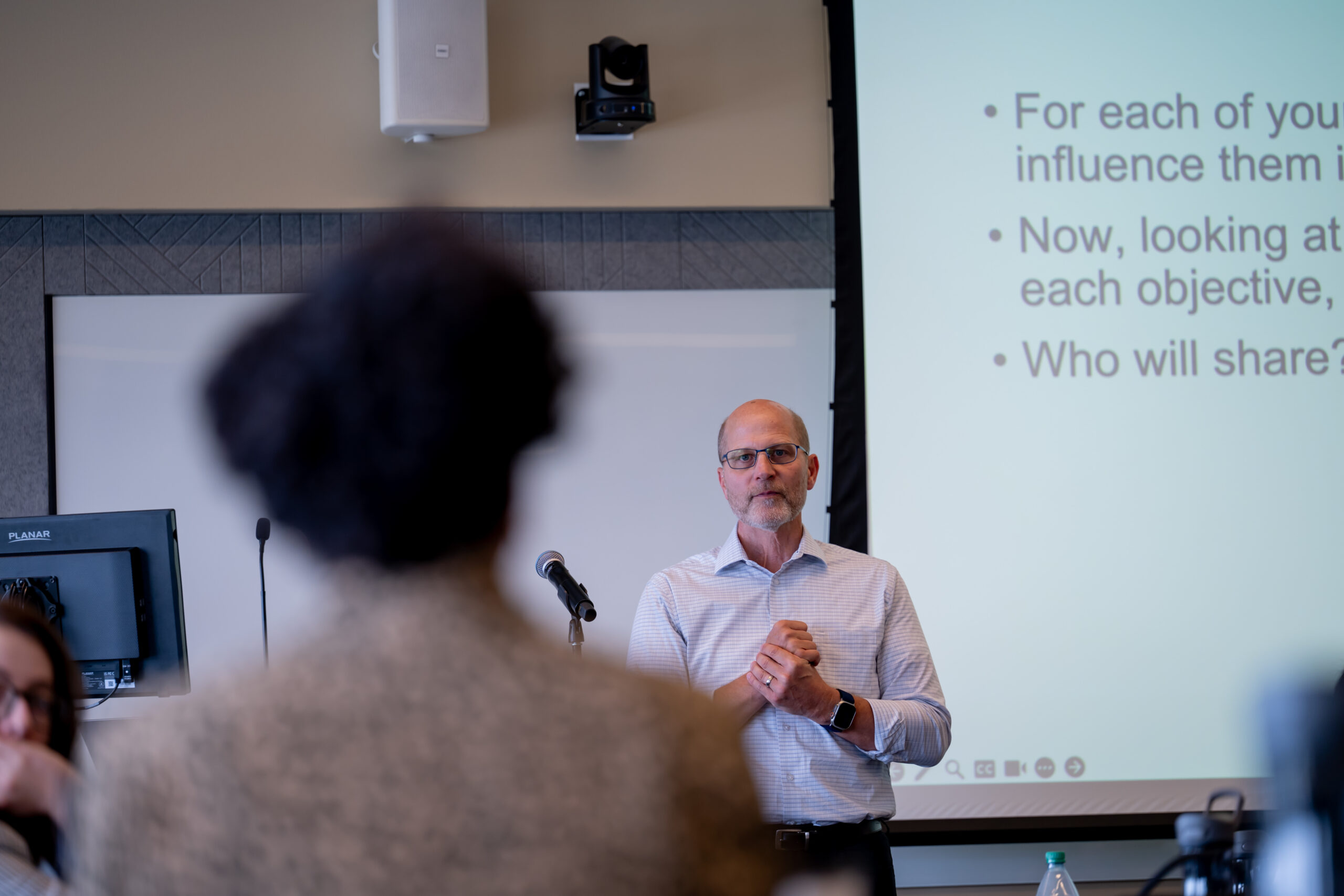Strategy. It’s a word tossed around in boardrooms, whispered in huddles, and often – unfortunately – misunderstood by many. To some, it’s a grand vision; to others, a vague aspiration.
But what is strategy, and perhaps more importantly, what is it not?
At Enable, we believe strategy is the disciplined, deliberate, and dynamic process of creating an undeniable edge that propels you towards your desired destination. It’s not a dusty tome on a shelf, nor a magical incantation. It is, to borrow from the insightful philosophy of Richard Rumelt, a coherent action plan designed to overcome a critical challenge.
For years, the term “strategy” has suffered from an identity crisis. It’s frequently conflated with goals, objectives, or even mere good intentions. While these elements are undoubtedly part of the broader business landscape, they are not, in themselves, strategy.
A goal might be “increase market share by 10%.” An objective might be “launch three new products this year.” But the strategy is the how: the specific, intentional steps, resource allocations, and competitive advantages you will leverage to achieve those aims.
The Rumeltian Lens: Strategy as Coherent Action
Richard Rumelt, in his seminal work Good Strategy/Bad Strategy, provides a powerful framework for understanding true strategy. He argues that good strategy is a coherent set of actions designed to overcome a critical challenge. It’s not about wishful thinking or a list of desirable outcomes. It’s about diagnosing the situation, crafting a guiding policy to address it, and then meticulously designing coherent actions to execute that policy.
This aligns perfectly with our own approach at Enable. We don’t begin with a lofty, abstract idea of where we want to be. Instead, we ground ourselves in reality, systematically dismantling the problem and building a robust path forward.

Our Approach to Strategy at Enable: A Cyclical Journey of Discovery and Edge-Building
Our strategy development at Enable is a rigorous, cyclical process designed to minimize risk and maximize the likelihood of success. It’s a journey of discovery, interrogation, and continuous refinement, built on three core pillars: understanding ourselves, understanding our customers, and building a compelling case for action.
1. Taking Inventory: Knowing Your Internal Enabling Assets
Before we even begin to look outwards, we turn inwards. What are our unique strengths? What resources do we possess – tangible and intangible – that can be leveraged for competitive advantage? This isn’t just about listing what we have, but evaluating the quality and utility of those assets.
Think of it as a deep dive into your organization’s DNA. What are your core competencies? Do you have a highly skilled engineering team? A proprietary technology? Exceptional customer service? A strong brand reputation? Understanding these internal “enabling assets” is crucial because they form the bedrock upon which your strategic actions will be built. Without a clear picture of your inherent capabilities, any strategy you attempt to implement will be built on shaky ground.
It’s about recognizing not just what you’re good at, but what you’re uniquely good at, and how those strengths can be deployed strategically.
This inventory isn’t a one-time exercise. As your organization evolves, so too will your internal assets. Regular re-evaluation ensures that your strategy remains aligned with your true capabilities.
2. Customer-Centric Research: Unearthing Unmet Needs and Desires
Once we understand ourselves, we turn our attention to the market – specifically, to our customers. This is where the real insights often lie. We don’t just ask customers what they like about us; we delve deeper. What are their pain points? What are they not getting from us, or crucially, from our competitors? What are their unspoken desires, their unmet needs, their frustrations?
This isn’t just about surveys; it’s about deep ethnographic research, one-on-one interviews, observational studies, and data analysis to paint a comprehensive picture of the customer landscape.
The goal is to identify genuine opportunities – gaps in the market that our unique enabling assets are perfectly positioned to fill.
This customer research is absolutely paramount. Without a profound understanding of what your target audience values and where their needs are currently underserved, your strategy is essentially a shot in the dark. It’s about listening, truly listening, to the voice of the customer and allowing their insights to shape your strategic direction. This is where innovation often sparks – not from internal brainstorming alone, but from a keen awareness of external demand.
3. Building Business Cases: Is the Juice Worth the Squeeze?

Armed with an understanding of our internal strengths and validated customer needs, we then move to the crucial stage of building business cases. This is where we get uncomfortably real. For each potential strategic direction, we meticulously analyze the costs, benefits, risks, and potential returns. This isn’t a superficial exercise; it involves detailed financial modeling, market analysis, competitive assessments, and a clear articulation of the resources required.
The question we’re constantly asking ourselves is: “Is the juice worth the squeeze?”
Are the potential rewards substantial enough to justify the investment of time, money, and effort? This rigorous vetting process helps us to avoid costly missteps and ensures that we are allocating resources to initiatives that have a genuine probability of delivering significant value. This is where risk mitigation comes to the forefront. We’re not just looking for opportunities; we’re also scrutinizing the potential downsides and developing contingency plans.
It’s tempting to jump straight to action, but without this robust business case development, you risk pouring resources into ventures that may not yield the desired returns. This stage forces discipline and a hard-nosed interrogation of reality.
4. Locking On: Defining Your Strategic Objective with Precision
Only after these three foundational steps are completed – after we have a clear inventory of our assets, a deep understanding of customer needs, and compelling business cases – we “lock on” what our strategic objective truly is. This objective is not a vague aspiration; it is a specific, measurable, achievable, relevant, and time-bound (SMART) target that directly addresses the identified market opportunity and leverages our strengths.
This precision is critical. A fuzzy objective leads to fuzzy actions.
A clear, well-defined strategic objective provides a laser focus for the entire organization, aligning efforts and ensuring everyone is pulling in the same direction.
It becomes the North Star that guides every subsequent decision and action.
5. Intentional Steps: Crafting the Edge
With the strategic objective firmly established, the next phase is to define the intentional steps that will not only help us achieve our goal but also deliver us a sustainable edge. This is where the rubber meets the road, where the theoretical becomes practical.
This is where the wisdom of William Poundstone’s Fortune Formula and the Kelley criterion of “edge over odds” become profoundly relevant. In our strategies, we are always looking to identify and build that “edge.”
An edge isn’t just a slight advantage; it’s a decisive differentiator that makes your success more probable. It could be superior product design, a more efficient distribution network, a unique customer experience, or a cost advantage.
The strategic steps are designed to amplify this edge, to stack the odds in our favor.
These steps are highly specific, outlining who does what, by when, and with what resources. They are not broad mandates but granular actions that collectively create a powerful momentum towards the objective. This is where the “action plan with great specificity” truly comes to life. These steps are highly specific, outlining who does what, by when, and with what resources. They are not broad mandates but granular actions that collectively create a powerful momentum towards the objective. This is where the “action plan with great specificity” truly comes to life.

Strategy is a Living Process, Not a Static Document
One of the most persistent myths about strategy is that it’s a fixed, one-time exercise. Many recall the “old days” of crafting elaborate strategic plans, only for them to gather dust on a shelf, forgotten soon after their creation. This approach was not only ineffective but a colossal waste of resources, often exacerbated by consultants who produced impressive-looking but ultimately unusable documents. The intention might have been good, but the lack of follow-through rendered them worthless.
At Enable, we emphatically reject this static view. Strategy is not a destination; it’s a continuous journey. It must be approached as a living process, constantly adapting to the dynamic environment in which we operate.
The cyclical nature of our process – taking inventory, conducting customer research, building business cases – isn’t just for the initial formulation. It’s a continuous feedback loop.
Depending on the rate of change in your industry, the frequency of this re-evaluation will vary. In rapidly evolving markets, assumptions need to be retested more frequently. Has something fundamental changed in the market? Has a new competitor emerged? Have customer preferences shifted dramatically? We need to constantly verify that our original assumptions still hold true. Is the juice still worth the squeeze? Do the business cases remain strong? Are the risks still acceptable in light of the potential rewards?
This agile approach to strategy is essential in today’s fast-paced world. Blind adherence to an outdated plan is a recipe for disaster. Instead, we embrace the need for adjustment, understanding that the path to success is rarely a straight line. It’s a continuum of continuously making choices that move you towards your goal, informed by real-time data and a willingness to pivot when necessary.

De-Risking Through Deliberate Action
There’s a common misconception that strategic growth inherently involves taking large, reckless risks. People sometimes ask if we’re entrepreneurs or even gamblers, implying that we advocate for companies to bet big to grow. This couldn’t be further from the truth. In fact, a significant aspect of good strategy is the removal of risk.
By being intentional, specific, and by rigorously interrogating reality, we systematically identify and mitigate potential pitfalls. The exhaustive customer research helps us avoid building products or services no one wants. The detailed business cases ensure we understand the financial implications and potential downsides. The continuous re-evaluation allows us to detect deviations early and course-correct before small problems become insurmountable obstacles.
We are successful not by being reckless, but by being careful, deliberate, and agile. We match pace with opportunities, taking measured steps to get through their doorway without blindly rushing into the unknown. Our goal is to increase the probability of success, not to gamble on unlikely outcomes.
The Power of Proximity and Front-Line Wisdom

Finally, and perhaps most importantly, successful strategy requires a constant connection to reality – and that reality often resides on the front lines of your organization. Many leaders make the mistake of sitting in “ivory towers,” detached from the daily operations and customer interactions that define their business. This disconnect is a significant impediment to effective strategy.
Practice listening to your team, especially those who are directly interacting with customers and operating your systems. They are often the first to see leading indicators that something isn’t quite right, the first to identify emerging trends, and the first to understand what truly needs to be done. Engage in conversations, foster an environment where feedback is welcomed, and actively seek out their insights.
Your front-line employees possess invaluable knowledge that can inform, refine, and even redefine your strategic approach.
Don’t tolerate lip service when it comes to strategy. It’s not about sounding good; it’s about doing good, about making tangible progress towards your objectives. Be intentional, be specific, and interrogate the hell out of the reality you are experiencing. Watch for those leading indicators, and when you see them, act. Your strategy is only as strong as its execution, and execution thrives on clear direction, continuous adjustment, and the collective wisdom of your entire team.
Ready to Bring More Rigor and Clarity to Your Strategy?
If this approach resonates and you’d like to explore how Enable can help you sharpen your edge, contact us today at contact@enablesolutions.us. We’d love to roll up our sleeves and talk through your biggest challenges—and help you turn them into your greatest opportunities.
